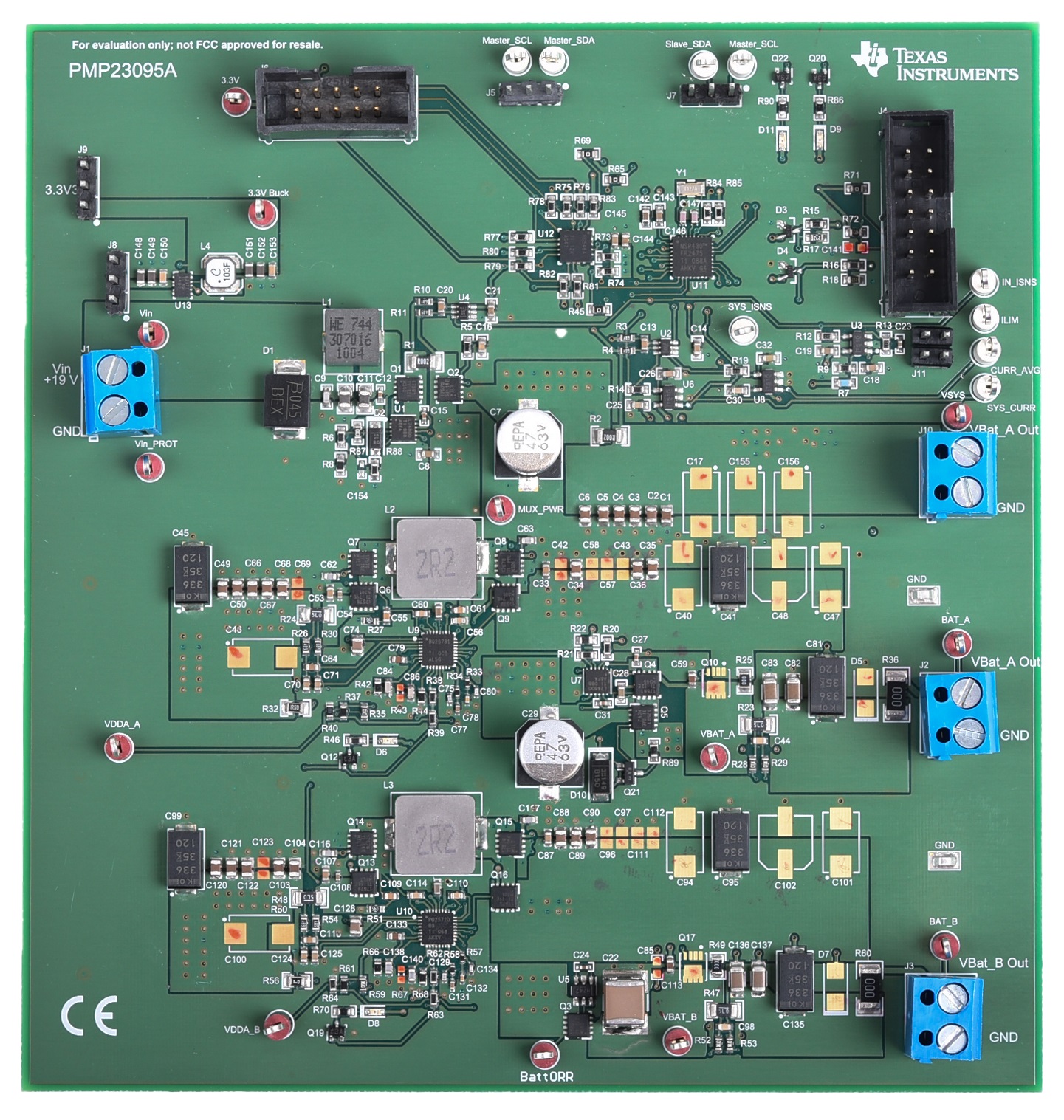-
Scalable Multi-Pack Smart Battery ChargerReference Design
- Description
- Resources
- Features
- Applications
- 5
- 1System Description
-
2System Overview
- 2.1 Block Diagram
- 2.2
Design Considerations
- 2.2.1 Power Multiplexing Circuit Design Parameters
- 2.2.2 Input Connections and Filter
- 2.2.3 Reverse Polarity Protection
- 2.2.4 Battery Charger Input
- 2.2.5 Battery Ideal Diode-OR
- 2.2.6 Input and Battery Switchover Mechanics
- 2.2.7 LM74800 (U1) HGATE
- 2.2.8 Battery LM74800 HGATE
- 2.2.9 BQ25731 Design Considerations
- 2.2.10 BQ25731 Component Selection
- 2.2.11 ILIM Circuit
- 2.2.12 MCU and I2C Bus Design Considerations
- 2.2.13 MSP430FR2475
- 2.2.14 I2C Bus Overview
- 2.2.15 MSP430 Connectors
- 2.2.16 MSP430 Power Supply
- 2.2.17 Sensing Circuits
- 2.2.18 Current Sensing
- 2.2.19 Voltage Sensing
- 2.2.20 Input Comparators
- 2.2.21 Software Flow Chart
- 2.3 Highlighted Products
- 3Hardware, Testing Requirements, and Test Results
- 4Design and Documentation Support
- 5Revision History
- IMPORTANT NOTICE
Scalable Multi-Pack Smart Battery ChargerReference Design
Description
This reference design is a smart high-efficiency charger design for dual smart battery packs of up to 100 Watt hours (Wh) implemented as 1S–5S Lithium-ion (Li-ion) batteries in a parallel configuration. To achieve this an onboard MCU manages the communication and safety features needed for the charging system to interface with a battery pack designed to the Smart Battery Data Specification Revision 1.1 (SBD 1.1). This communication allows the MCU to initialize two independent battery charger ICs to the correct charging parameters, as well as inhibit charging when the batteries are outside of safe specifications. This design also demonstrates a high-efficiency system power MUX for selecting between the input adapter and efficient discharge of the two smart batteries simultaneously. These features make this reference design highly applicable for portable medical devices, such as oxygen concentrators.
Resources
| TIDA-010240 | Design Folder |
| BQ25731 | Product Folder |
| LM7480-Q1, LM74700-Q1 | Product Folder |
| MSP430FR2475, PCA9546A | Product Folder |
Features
- Provides a complete drop-in battery charging system for charging and communication with two smart Lithium-Ion batteries
- Supports 1S–5S packs with charge currents of up to 16-A per battery
- Onboard MCU for charge control and upstream communication with system host
- Onboard MCU communicates with smart battery gauges to read charging information and monitor alerts

